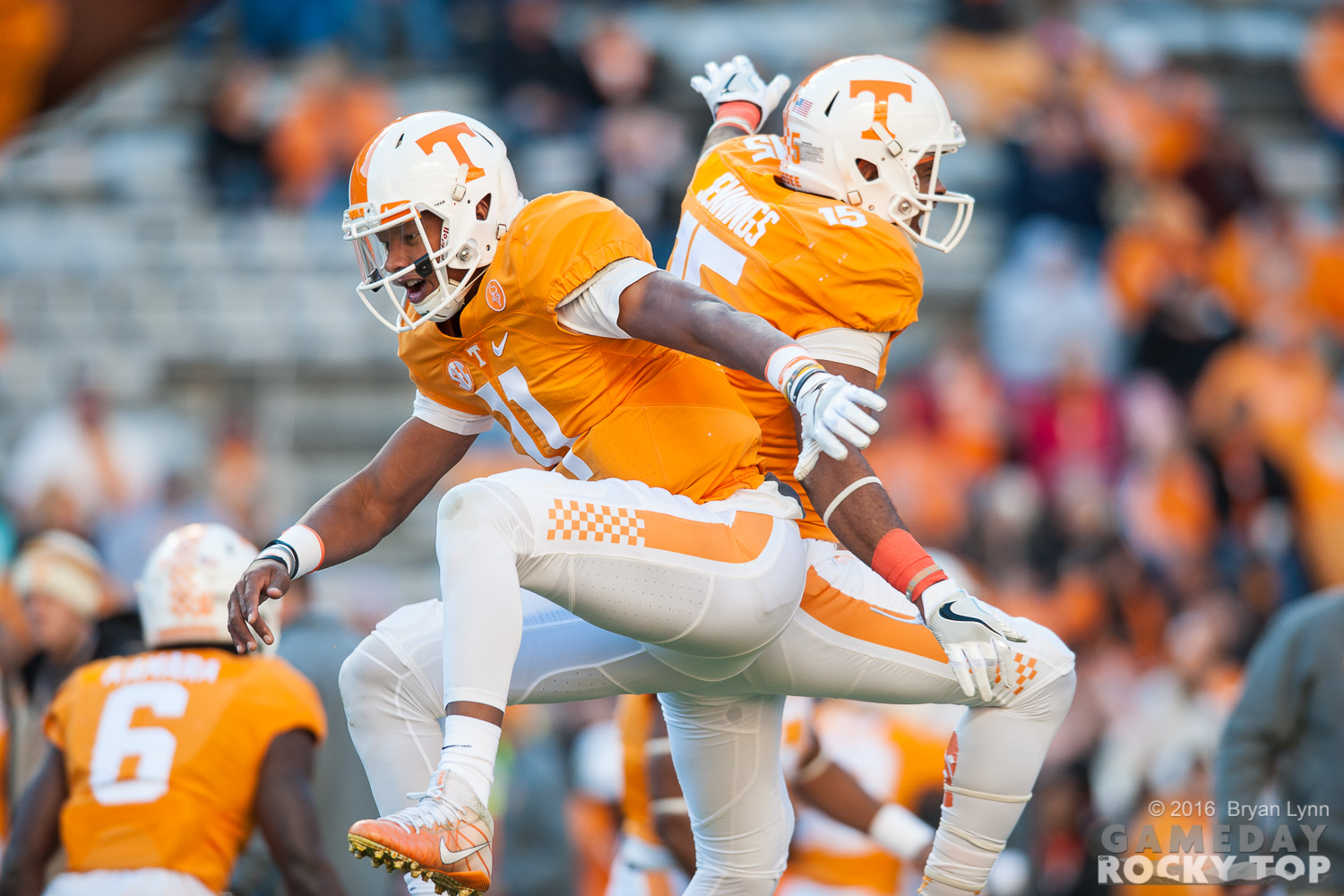One of the things we college football fans naturally do is adjust our expectations for the team each week based on what happened the prior weekend. Did our team do well? How did our past and future opponents look? What does it all mean for what we should reasonably expect the rest of the season?
At the beginning of the season, you really have no idea. Of course, that doesn’t stop anyone from formulating an opinion, and you do try to piece together somewhat reliable data in the form of last year’s stats and this year’s roster in order to better inform that opinion. But even the best prognosticators merely have an educated guess at this point.
So, here’s my guess this preseason, side by side with yours, using the data that Will compiled yesterday from the surveys y’all filled out on Tennessee’s game-by-game win probabilities:

As Will said yesterday, most Vols fans and pundits seem to be hovering around 8-4 for their regular-season predictions, with reasonable cases also being made for 9-3 and 7-5.
Although my calculated win total based on my own game-by-game projections only amounts to 7.57 wins, I’m actually leaning toward a prediction of 9-3. Here’s my thought process:
We tend to head into a season thinking that our team is a certain level of good, that other teams are at their own levels, and that our team will beat every opponent that is worse and lose to every team that is better.
But reality just isn’t as linear as we’d like it to be. Consider last year’s preseason predictions (the locations of the data) and the actual results (the colors of the data; red for loss, green for win):

If the world was orderly, all of the green would be grouped together at the bottom and all of the red would be grouped together at the top. But that isn’t the way it happened, and it doesn’t mean that South Carolina and Vanderbilt turned out to be better than Georgia and Florida. Something else happened. It’s call college football.
So, what I do is look at the top to see which teams I think are clearly better than the Vols and count those as almost certain losses. Then I look at the bottom to see which teams I think are clearly worse than the Vols and count those as almost certain wins.
And then I look at the middle, not for where I draw a line between winning and losing, but to make an educated guess as to how the odds might play out.
Here’s how that method looks in practice. Alabama’s at the top, and it’s an almost certain loss. Indiana State, UMass, and (probably) Southern Miss are at the bottom, so they are almost certain wins. That puts us at 3-1 with eight other teams at which to take a closer look.
LSU, Florida, and Georgia comprise one group (although I feel worse about LSU than most), and Georgia Tech, South Carolina, Kentucky, Missouri, and Vanderbilt comprise another. I’m thinking we lose two of three of the first group and then, maybe, one other game. If I had to pick, I’d say we lose to LSU and either Florida or Georgia, but not both. And I’m not predicting it will happen, but I’m not going to be surprised to lose one other game, either to the other one of Florida and Georgia or to someone in the second group. Disappointment begins to kick in with any additional losses after that.
I’ve been telling people this summer that I believe the team could actually be better this year but not have the record to show for it, and the reason for that is what I see as 50/50 games against Florida and Georgia. I really don’t think the team makes the same mistakes this fall it made last year in losing to two teams it shouldn’t. But it’s also pretty difficult to roll snake eyes on toss up games. We could finish with the same record this fall as last, but lose to both Florida and Georgia this time instead of South Carolina and Vanderbilt.
And yet football isn’t strictly a game of chance, so it could actually be true that Tennessee is just better than everyone but a team or two on its schedule and actually go out and prove it. We’ll just have to wait and see.

You must be logged in to post a comment.